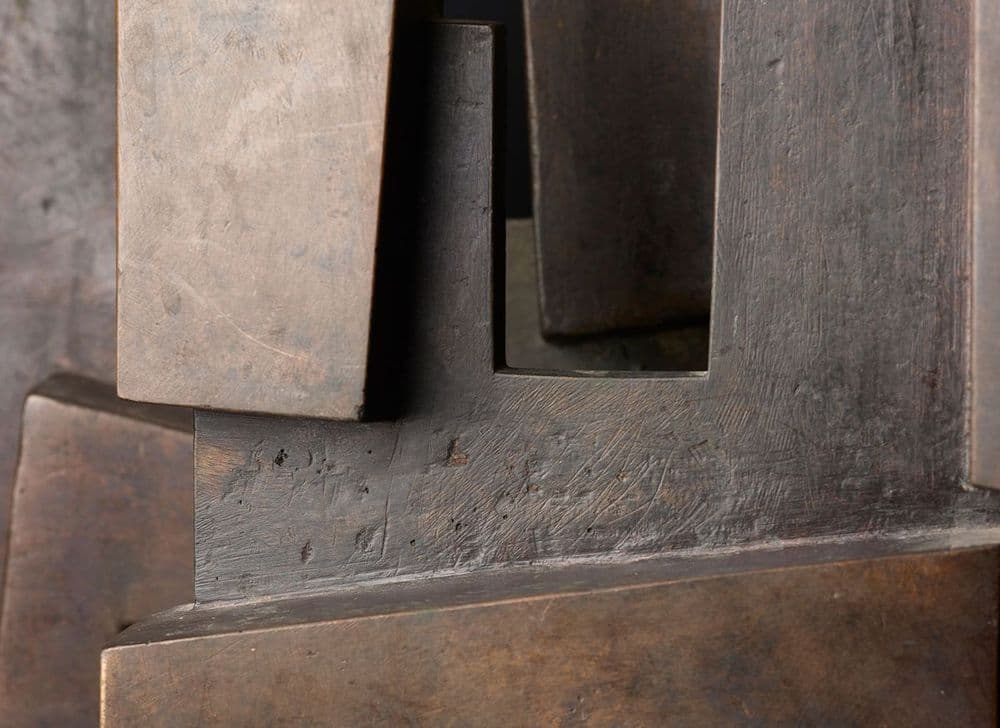Robert Adams’ work was included in the Gimpel Fils British Abstract Art exhibition in 1951, when he was exploring a constructivist and abstract vocabulary. It was during this period in the 1950s - an important moment in the development of Modern British Art - that Adams first became associated with the artists of St Ives, having visited the town for a few weeks each summer since at least 1952 when he had been invited by Wilhelmina Barns-Graham and David Lewis (her husband), along with his wife Pat, to stay with them.
They developed into a close-knit foursome, and made regular visits to each other’s homes in Hampstead in London, and St. Ives subsequently. Barns-Graham made a point of always having Adams’ work on display, and on moving into her new studio at Barnaloft on Porthmeor Beach in St Ives in 1963, the ceramic plate by him was the first thing hung in her new home.
Through the 1950s, he taught at the Central School of Art and Design in London, coming into contact with Victor Pasmore and artists such as Kenneth Martin and Mary Martin who were pursuing abstract and constructivist ideas in Britain at this point, and it was at this time he loosely joined in the activities of this liked-minded group, remaining allied to them until around 1956. During this period Adams sent both paintings and sculptures to group exhibitions of their work and it is likely that this ceramic could have been among these works, specifically as Pasmore and Kenneth Martin were also known to have made designs for plates, some being exhibited at the Redfern Gallery in May 1952.
Patrick Heron and David Lewis specifically praised his architectonic bronzes with Heron pronouncing them as ‘certainly the most wholly non-figurative sculpture being made by a younger English sculptor today’ (Patrick Heron, Round the London Galleries, The Listener, vol.I.V, no.1407, 16 February 1956, p.256.) and Lewis observing that ‘Adams is alone in Britain in the important field of sculptural development, of sturdy sharp-edged and sharply differentiated geometrical masses which are rhythmically and energetically related in space and in light and shadow.’ (Quoted in Alastair Grieve, The Sculpture of Robert Adams, p.61)




